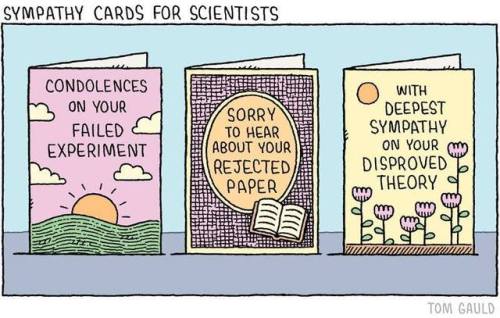Hidden Corners Of My College Library.


Hidden corners of my college library.
More Posts from Fraxxed and Others

12/31/2017
so it’s going to be a new year. to be honest, this is maybe the first year where i made something even close to new years resolutions, even if it isn’t set in stone, or written down at all. i like to think that was because of you, the studyblr community i met this year. i know that sometimes the focus on the “aesthetic” part of studying and school is toxic, but this year, at least for me, it has enhanced my productivity. and for next year, my “resolutions” are mostly based on a lot of the things online that have inspired me, and things i never would have noticed before i joined this community. thank you all for expanding my horizons, thank you all for being the kind, caring, and attentive souls you are. happy 2018❤️

Sympathy Cards for Scientists
by Tom Gauld (https://www.tomgauld.com/)
REBLOG IF
- you are a studyblr
- you are super friendly
- you love when people message you
- you want to support everyone in the community
one thing i love about this community is that it is one big family and everyone is ready to support eachother. reblog this and follow the people that also reblog and start some super cute supportive friendships because you all deserve the best

put your health first.
put your recovery first.
put yourself first.
Study identifies new target to preserve nerve function
Scientists in the Vollum Institute at OHSU have identified an enzyme that plays a crucial role in the degeneration of axons, the threadlike portions of a nerve cell that transmit signals within the nervous system. Axon loss occurs in all neurodegenerative diseases, so this discovery could open new pathways to treating or preventing a wide array of brain diseases.
The research team discovered a new role of the enzyme Axundead - or Axed - in promoting the self-destruction of axons. They found that when Axed function was blocked, injured axons not only maintained their integrity but remained capable of transmitting signals within the brain’s complex circuitry for weeks. Their research was published July 5 in the journal Neuron.
“If you target this pathway, you have a really good chance of preserving the functional aspects of neurons after a variety of types of trauma or injury,” said senior author Marc Freeman, Ph.D., director of the Vollum Institute at OHSU. “It’s a very attractive therapeutic target.”
Freeman conducted the work in the Department of Neurobiology at the University of Massachusetts Medical School. He has since been recruited to head the Vollum Institute, which conducts cutting-edge basic research into how the nervous system works at a molecular level.
Severing axons, or axotomy, is a simple way to study the molecular basis of neurodegeneration as it leads to the activation of explosive axonal degeneration. In the laboratory, researchers using this technique can identify pro-degenerative genes with great specificity, especially when using sophisticated genetic approaches in the fruit fly Drosophila, Freeman’s primary research model organism. Drosophila shares these same pathways with humans. Previous work by Freeman’s lab identified another enzyme, a gene called SARM, which was the first shown to activate a process that causes axons to disintegrate when damaged.
In the current study, Freeman and colleagues identified Axed, showed that it functions downstream of SARM to execute axonal degeneration, and, surprisingly, that the protection afforded by blocking Axed was even stronger than SARM.
“There was really nothing we could do to kill axons where Axed function was blocked,” Freeman said.
From an evolutionary perspective, Freeman said SARM and Axed function are likely important in the peripheral nervous system after injury because programmed axon death allows for efficient packaging of damaged cellular materials for removal by immune cells. This process thereby clears the pathway for new neuronal processes to regrow, reinnervate tissues, and recover function.
From a therapeutic perspective, the goal of the work is to understand at the molecular level how axons degenerate, and block those pathways in patients to preserve nervous system function. In many nervous system injuries axons are not severed but become stretched or crushed, which activates the SARM-dependent death program and drives axon loss. In those cases, it’s imperative to block SARM and Axed signaling to preserve axon integrity, and in turn neuronal function. At the same time, Freeman and others have shown that SARM-dependent signaling pathways also drive axon loss in neurodegenerative conditions including glaucoma, traumatic brain injury and peripheral neuropathy. This suggests the notion of an ancient and conserved axon death signaling pathway that is widely activated to drive axon loss. Since axon loss is a universal feature of neurodegenerative diseases, it seems likely that blocking this pathway could have enormous therapeutic benefit.
“If we can find ways to block it, maybe we can preserve function in a wide array of patients who have lost axons through neurodegenerative diseases or other neural trauma,” Freeman said.




🌿✨🧚🏼Lapiscat Witchy Giveaway 🧚🏼✨🌿
The giveaway includes: Red Jasper leather grimoire, Amethyst pendulum, Earth Power by Scott Cunningham, Ritual Loose Incense, Ritual Bath Soak, Tea drops (Citrus Ginger), Sage Smoke Cleansing set,Quartz formation, Labradorite, Rhodonite, Blue Quartz, Rose Quartz, Howlite
Rules for the giveaway:
Must be following me.
Must like and reblog this post, but do NOT spam!
Tag a friend for an extra entry
The winner will be announced March 30th, 2018!
each reblog counts as an entry, but do not spam your followers and flood their page with this post!
I’m constantly torn between “if it’s meant to be, it will be” and “if you want it, go and get it.”










has this been done yet
🙃 I had so much I wanted to get done over winter break and so far all I’ve done is replay life is strange and watch unsolved.
-
 theapothecaryssketches reblogged this · 5 months ago
theapothecaryssketches reblogged this · 5 months ago -
 theapothecaryssketches liked this · 5 months ago
theapothecaryssketches liked this · 5 months ago -
 amelia1976 liked this · 7 months ago
amelia1976 liked this · 7 months ago -
 katthanekaipatroklos reblogged this · 1 year ago
katthanekaipatroklos reblogged this · 1 year ago -
 thelovelygods reblogged this · 1 year ago
thelovelygods reblogged this · 1 year ago -
 shisasan liked this · 1 year ago
shisasan liked this · 1 year ago -
 xtxa777 liked this · 1 year ago
xtxa777 liked this · 1 year ago -
 panoptical reblogged this · 1 year ago
panoptical reblogged this · 1 year ago -
 clutterbookbug reblogged this · 1 year ago
clutterbookbug reblogged this · 1 year ago -
 zerknij reblogged this · 2 years ago
zerknij reblogged this · 2 years ago -
 angelus-secret-password reblogged this · 2 years ago
angelus-secret-password reblogged this · 2 years ago -
 urfavebuzzkill liked this · 2 years ago
urfavebuzzkill liked this · 2 years ago -
 anteceqent reblogged this · 2 years ago
anteceqent reblogged this · 2 years ago -
 academeia reblogged this · 2 years ago
academeia reblogged this · 2 years ago -
 incertemani liked this · 2 years ago
incertemani liked this · 2 years ago -
 still-dreaming reblogged this · 2 years ago
still-dreaming reblogged this · 2 years ago -
 still-dreaming liked this · 2 years ago
still-dreaming liked this · 2 years ago -
 746455nara liked this · 2 years ago
746455nara liked this · 2 years ago -
 baciok reblogged this · 2 years ago
baciok reblogged this · 2 years ago -
 panoptical reblogged this · 2 years ago
panoptical reblogged this · 2 years ago -
 goldeneor reblogged this · 2 years ago
goldeneor reblogged this · 2 years ago -
 lunarssong liked this · 2 years ago
lunarssong liked this · 2 years ago -
 panoptical reblogged this · 2 years ago
panoptical reblogged this · 2 years ago -
 dendro-ranger reblogged this · 2 years ago
dendro-ranger reblogged this · 2 years ago -
 chalk-homunculus reblogged this · 2 years ago
chalk-homunculus reblogged this · 2 years ago -
 weepingheads liked this · 2 years ago
weepingheads liked this · 2 years ago -
 fat-bro-strider-tgirl-tits liked this · 2 years ago
fat-bro-strider-tgirl-tits liked this · 2 years ago -
 chalk-homunculus reblogged this · 2 years ago
chalk-homunculus reblogged this · 2 years ago -
 vampireswifes liked this · 2 years ago
vampireswifes liked this · 2 years ago -
 petitmatou reblogged this · 3 years ago
petitmatou reblogged this · 3 years ago -
 cryingaftersex liked this · 3 years ago
cryingaftersex liked this · 3 years ago -
 rotten---girl liked this · 3 years ago
rotten---girl liked this · 3 years ago -
 sincityriddler liked this · 3 years ago
sincityriddler liked this · 3 years ago -
 witchesgrove reblogged this · 3 years ago
witchesgrove reblogged this · 3 years ago -
 sammyssquad reblogged this · 3 years ago
sammyssquad reblogged this · 3 years ago -
 pada-viya reblogged this · 3 years ago
pada-viya reblogged this · 3 years ago -
 sylviaandvirginia reblogged this · 3 years ago
sylviaandvirginia reblogged this · 3 years ago -
 acrellia liked this · 3 years ago
acrellia liked this · 3 years ago -
 trouble-coupled-in-double reblogged this · 3 years ago
trouble-coupled-in-double reblogged this · 3 years ago